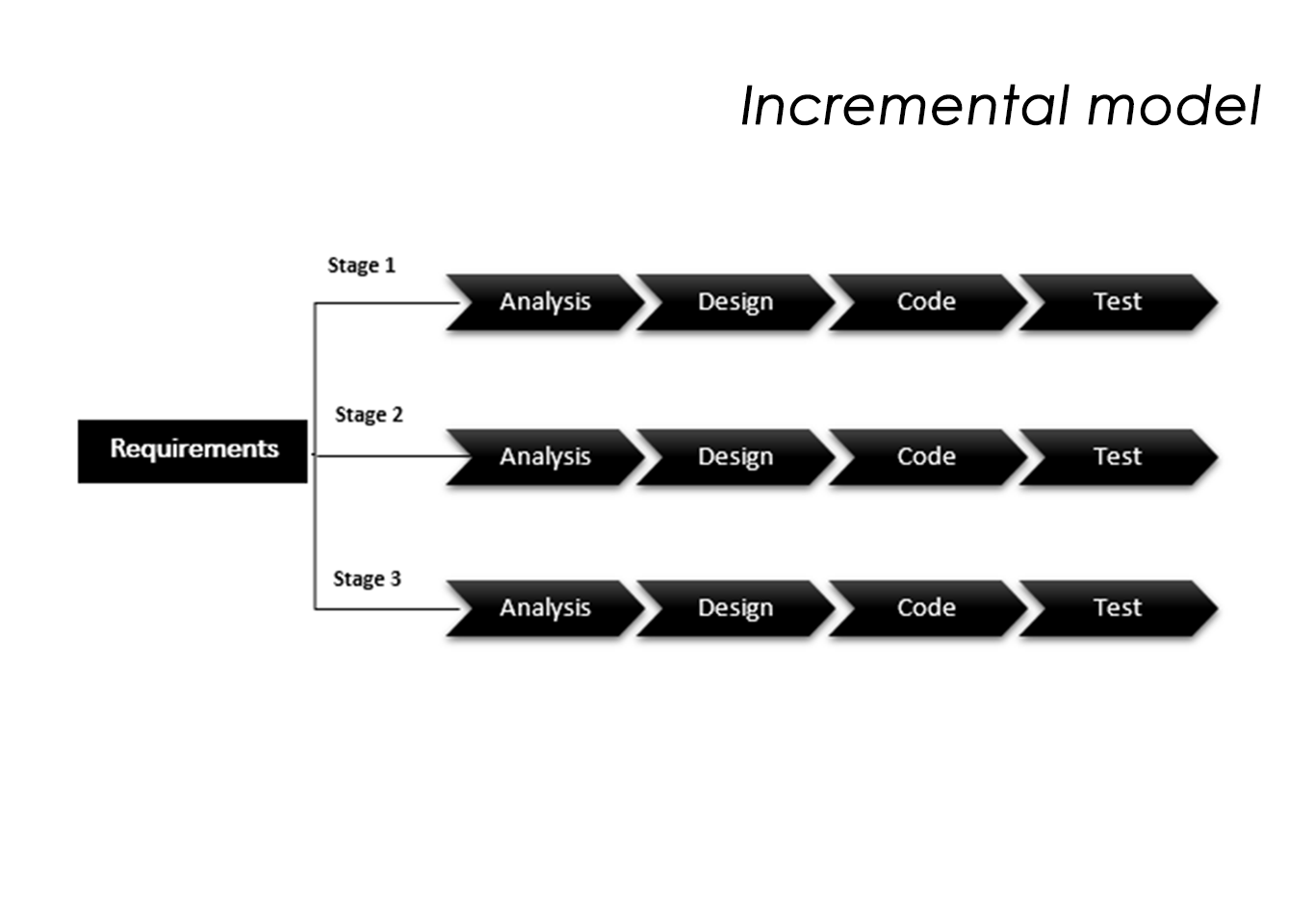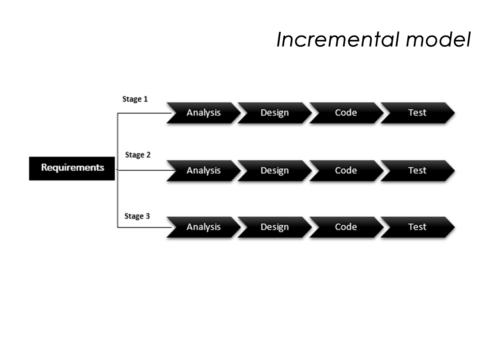Introduction
Incremental model is a software development methodology in which software requirements are broken down into multiple standalone modules.
The incremental model breaks into small modules which go through analysis, design, code and testing phases. There can be more than one iteration. Each iteration release of the system adds function to the previous release until all designed functionality has been implemented. Using this module, we can implement full 100% functionality to our system without having a minor mistake.
In incremental model, priority will be given to each stages but highest required part of the product will be tackled first. As it is broken down into small modules, it is to assign the tasks to the development teams. The iteration will not stop until the final product is finalized. The incremental model suggest that the delivered early increment should possess the functionality of customer’s interest.

Incremental model development phases
Requirement analysis
This is the first phase of the incremental model. In this phase requirements of the products are analysed and identified. Proper requirements are necessary for the proper development of the product.
Design
The second phase is the design phase. The proposed system is designed according to the customer’s requirements. Good design leads to the good development.
Develop
After the design phase is completed, the actual product is built in this phase. Coding is performed according to the requirement and design.
Test
In this phase, testing is performed. It is important to test the product before the release to find out the errors and eliminate them.
When to use incremental model
- This model need to be used if the requirements are clearly understood.
- If you need additional feature in your system.
- When customer demands an early release.
- When the product has lengthy development schedules.
- When the development is not trained and high skilled.
- When your requirements are to be changed.
Advantages
- It is flexible and cost effective method.
- Requires low cost to modify the scope and requirements.
- Risk management is easy as risky modules are identified during iteration.
- The customer provides feedback on each iteration.
- Testing will be performed on each iteration.
- Changing the requirement can be done at any time during development.
Disadvantages
- Requires proper planning and designing.
- It requires clear and complete definition of whole system.
- Each phase of iteration is rigid and do not overlap with each other.
- Changing requirements of users may arise the cost of the product.
- Correcting a problem in one unit requires correction in all the units and consumes a lot of time.



Fantastic site A lot of helpful info here Im sending it to some buddies ans additionally sharing in delicious And naturally thanks on your sweat